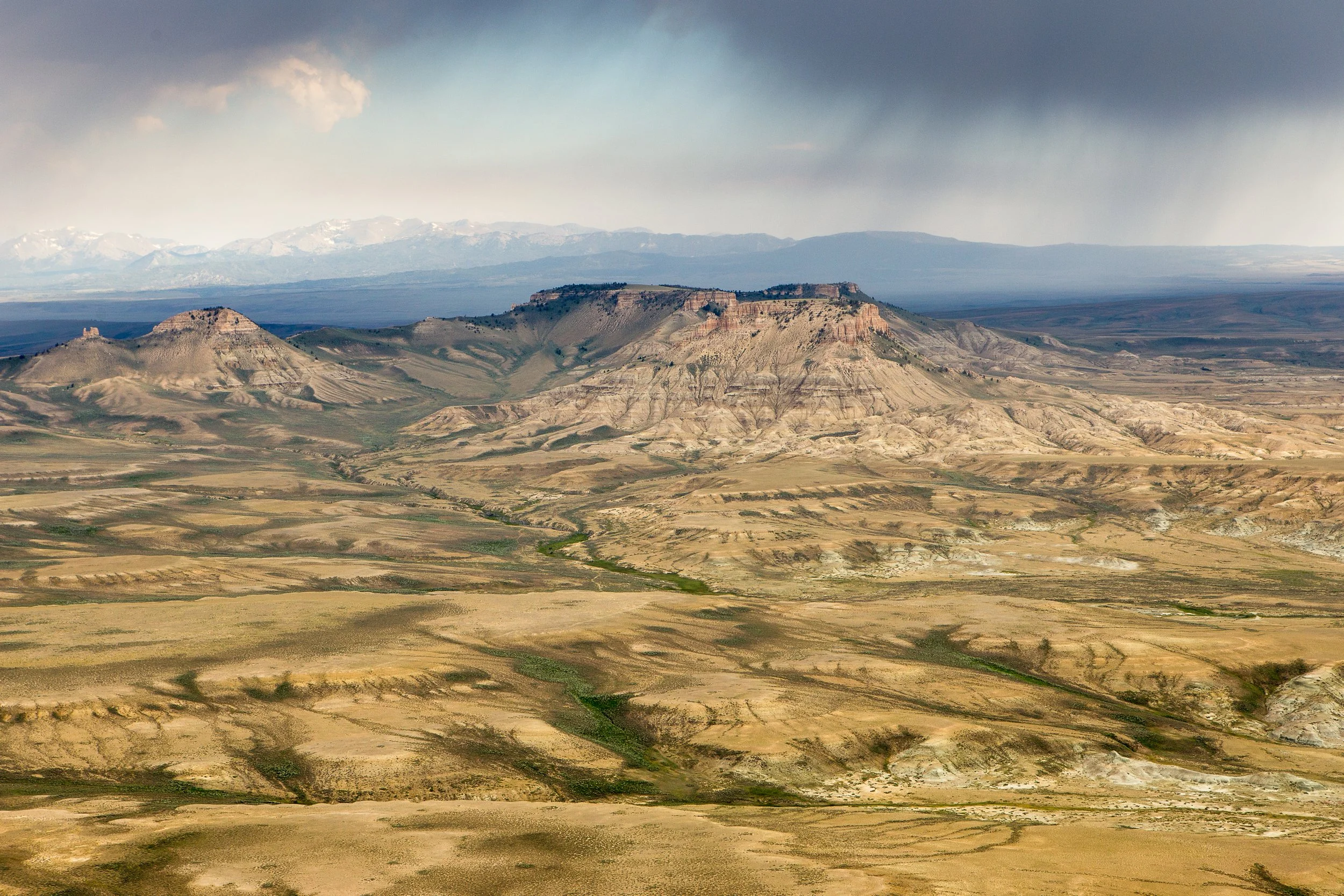
The Land and Wildlife
The Land and Wildlife
Scott Copeland
The Red Desert is a vast, rugged land of beauty, wildness, and solitude - a scenic landscape of national significance.
…with sweeping vistas, volcanic buttes, iconic badlands, unique geology, world-class night skies, and the largest living sand dune complex in North American, containing the greatest concentration of BLM wilderness study areas in Wyoming.
Bob Wick/BLM/Flickr
Boar’s Tusk and the
Killpecker Sand Dunes
Nick Wegner
The Oregon Buttes and
Wind River Mountains
in the background
Continental Peak and the Honeycomb Buttes
Wyoming Wilderness Association
Ecoflight
Table Mountains
The Red Desert is a land of varied habitats supporting a diversity of wildlife.
Sagebrush steppe – laced with springs and aspen stands, desert badlands, buttes and mountain rims, and unique ephemeral ponds within the Sand Dunes – support important habitats for big game herds, other resident mammals, nesting and migrating birds, and reptiles and amphibians.
The Red Desert provides important habitats for big game herds –
critical winter range and the southern anchor for the world’s longest mule deer migration
winter range and migration routes for the state’s largest pronghorn herd
the largest desert elk herd in Wyoming
Steamboat Mountain, rising over 9,000 feet in elevation, provides important habitats for migrating mule deer and calving grounds for elk.
Mason Cumming/The Wilderness Society
BLM WY/Flickr
The Red Desert’s undeveloped character is a haven for the Greater Sage-Grouse, Burrowing Owls, Mountain Plovers and other iconic species.
Its wild landscapes serve as natural benchmarks for monitoring ecological change, help to harbor rare plants, and provide seasonally important habitats to a broad range of wildlife.
WY Game and Fish Department
Ecoflight
Dunal ponds emerge in the spring and summer throughout the Sand Dunes as winter snow – covered and insulated by shifting sands – slowly melts out.








